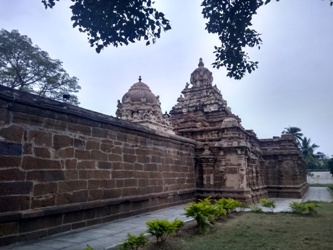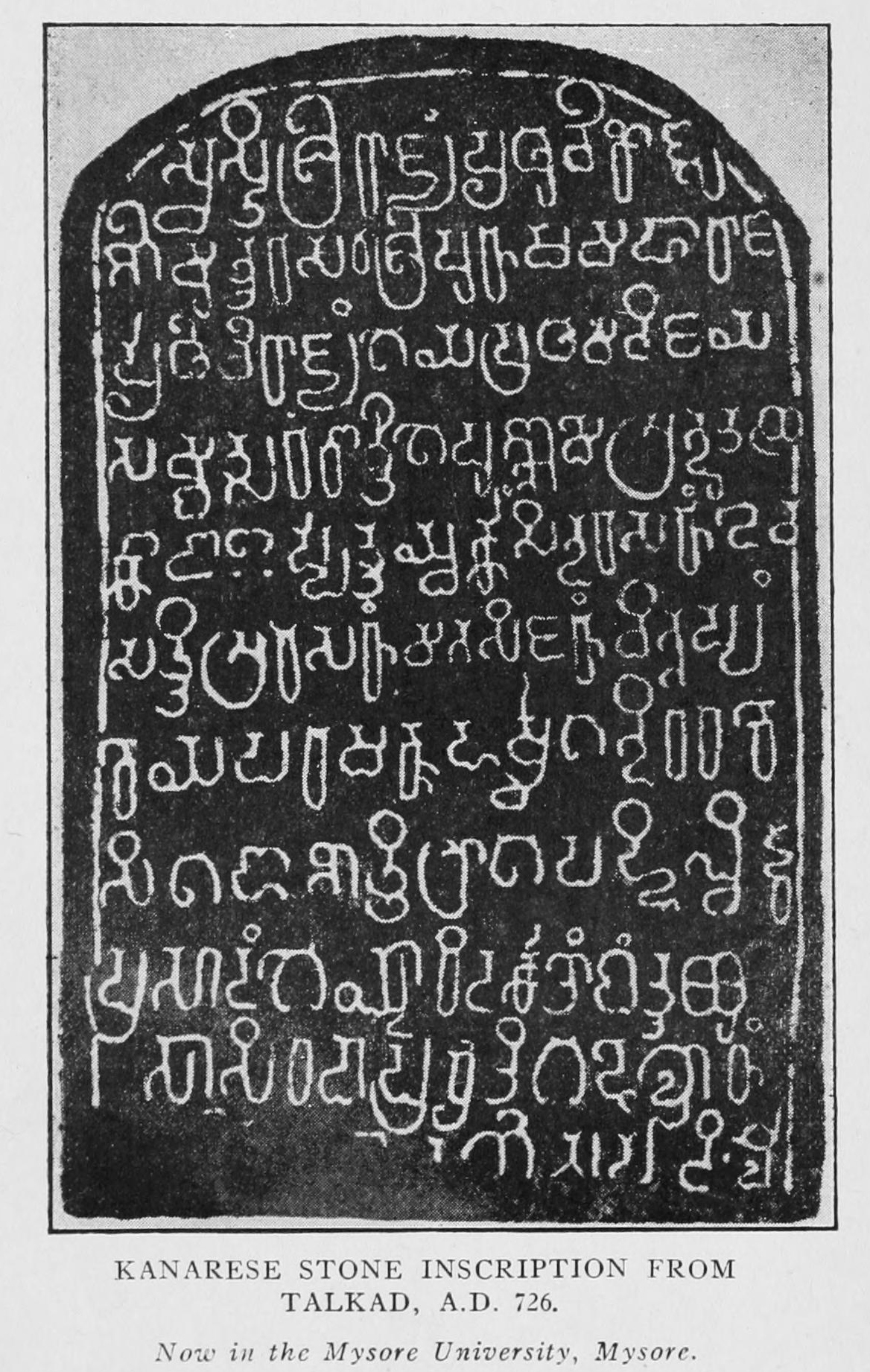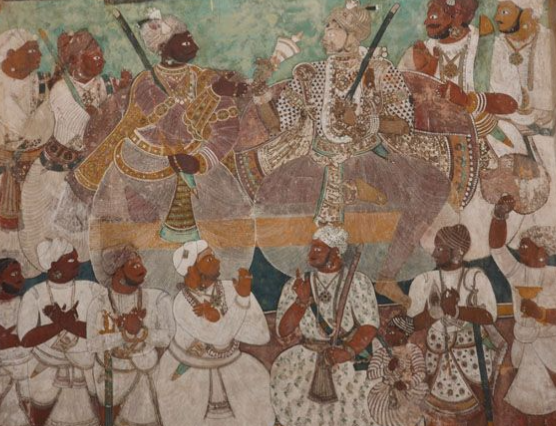|
Dhruva Dharavarsha
Dhruva (r. 780 – 793 CE) was one of the most notable rulers of the Rashtrakuta Empire. He ascended the imperial throne after replacing his elder brother Govinda II. Govinda II had become unpopular among his subjects on account of his various misconducts as a monarch, including excessive indulgence in sensual pleasures. This according to the historian Kamath is evident from the Karhad plates of Krishna III.Kamath (2001), p75 The Dhulia grant of 779 and Garugadahalli inscription of 782 proclaim Dhruva the emperor. Though some historians claim that Dhruva revolted and grabbed the throne,Bisheshwar Nath Reu, Reu (1933), p62 other historians feel the transition of the throne from Govinda II to Dhruva was peaceful and may have happened willingly.Dr. P. B. Desai and K. V. Subrahmanya Aiyar in Kamath (2001), p75 He earned titles like ''Kalivallabha'', ''Srivallabha'', ''Dharavarsha'', ''Maharajadhiraja'' and ''Parameshvara''. Success in north and east Dhruva Dharavarsha had a high ... [...More Info...] [...Related Items...] OR: [Wikipedia] [Google] [Baidu] |
King Of Kings
King of Kings, ''Mepet mepe''; , group="n" was a ruling title employed primarily by monarchs based in the Middle East and the Indian subcontinent. Commonly associated with History of Iran, Iran (historically known as name of Iran, Persia in Western world, the West), especially the Achaemenid Empire, Achaemenid and Sasanian Empires, the title was originally introduced during the Middle Assyrian Empire by King Tukulti-Ninurta I (reigned 1233–1197 BC) and was subsequently used in a number of different kingdoms and empires, including the aforementioned Persia, various History of Greece, Hellenic kingdoms, History of India, India, History of Armenia, Armenia, History of Georgia (country), Georgia, and History of Ethiopia, Ethiopia. The title is commonly seen as equivalent to that of Emperor, both titles outranking that of king in prestige, stemming from the Late antiquity, late antique Roman emperor, Roman and List of Byzantine emperors, Eastern Roman emperors who saw the ''S ... [...More Info...] [...Related Items...] OR: [Wikipedia] [Google] [Baidu] |
Gurjara-Pratihara
The Pratihara dynasty, also called the Gurjara-Pratiharas, the Pratiharas of Kannauj or the Imperial Pratiharas, was a prominent medieval Indian dynasty which ruled over the Kingdom of Kannauj. It initially ruled the Gurjaradesa until its victory in the Tripartite Struggle in 816 which secured its right to the throne of Kannauj. Cadet branches of the dynasty ruled other minor states in the subcontinent. The Pratiharas were instrumental in containing Arab armies moving east of the Indus River. Nagabhata I defeated the Arab army under Junaid and Tamin in the Caliphate campaigns in India. Under Nagabhata II, the Pratiharas became the most powerful dynasty in northern India. He was succeeded by his son Ramabhadra, who ruled briefly before being succeeded by his son, Mihira Bhoja. Under Bhoja and his successor Mahendrapala I, the Pratihara dynasty reached its peak of prosperity and power. By the time of Mahendrapala, the extent of its territory rivalled that of the Gupta E ... [...More Info...] [...Related Items...] OR: [Wikipedia] [Google] [Baidu] |
Nandivarman II
Nandivarman II (718 CE – 796 CE) was a Pallava monarch who reigned in southern India. Sen states Nandivarman reigned from 731 CE to 796 CE and built the Vaikuntha-Perumal Temple. He was born in the country of Champa (present-day Vietnam), in Simhapura into a local dynasty of Pallava origin and was elected as the Pallava monarch at the age of 13. Biography Paramesvaravarman II was succeeded by a 12-year old Nandivarman II Pallavamalla who belonged to a collateral line of Pallavas called the Kadavas. The latter were the descendants of Bhimavarman, the brother of Simhavishnu. According to epigraphical findings, Hiranyavarman, the father of Nandivarman Pallavamalla belonged to the Kadavakula. Nandivarman II himself is described as "one who was born to raise the prestige of the Kadava family". He has commissioned the Tiru Parameswara Vinnagaram. The term ''Kaduvetti'' in Tamil means ''destroyer or clearer of forests'' as the Pallavas like their ancestor Mukkanti Kaduve ... [...More Info...] [...Related Items...] OR: [Wikipedia] [Google] [Baidu] |
Pallava
The Pallava dynasty existed from 275 CE to 897 CE, ruling a significant portion of South India, the Deccan, also known as Tondaimandalam. The Pallavas played a crucial role in shaping in particular southern Indian history and heritage. The dynasty rose to prominence after the downfall of the Satavahanas, Satavahana Empire, whom they had formerly served as feudatories. The Pallavas became a major South India, southern Indian power during the reign of Mahendravarman I (600–630 CE) and Narasimhavarman I (630–668 CE), and dominated the southern Andhra Pradesh, Telugu region and the northern parts of the Ancient Tamil country, Tamil region for about 600 years, until the end of the 9th century. Throughout their reign, they remained in constant conflict with both the Chalukyas of Badami, Vatapi to the north, and the Tamil kingdoms of Chola Dynasty, Chola and Pandyas to their south. The Pallavas were finally defeated by the Chola ruler Aditya I in the 9th century CE. The Pallav ... [...More Info...] [...Related Items...] OR: [Wikipedia] [Google] [Baidu] |
Western Ganga Dynasty
Western Ganga was an important ruling dynasty of ancient Karnataka in India which lasted from about 350 to 999 CE. They are known as "Western Gangas" to distinguish them from the Eastern Ganga Dynasty, Eastern Gangas who in later centuries ruled over Kalinga (historical region), Kalinga (modern Odisha and Northern Andhra Pradesh). The general belief is that the Western Gangas began their rule during a time when multiple native clans asserted their freedom due to the weakening of the Pallava empire in South India, a geo-political event sometimes attributed to the southern conquests of Samudra Gupta. The Western Ganga sovereignty lasted from about 350 to 550 CE, initially ruling from Kolar, Karnataka, Kolar and later, moving their capital to Talakadu on the banks of the Kaveri River in modern Mysore district. After the rise of the imperial Chalukya dynasty, Chalukyas of Badami, the Gangas accepted Chalukya overlordship and fought for the cause of their overlords against the Pal ... [...More Info...] [...Related Items...] OR: [Wikipedia] [Google] [Baidu] |
Shivamara II
Shivamara II was the son of Sripurusha and ruled the Western Ganga Dynasty from 788 – 816 C.E. He was also a noted scholar in Kannada, Sanskrit and Prakrit. He succeeded to the Ganga throne during a time when the Rashtrakuta were the empire on the rise in South India and the Deccan. Conflict with Rashtrakuta The Rashtrakuta monarch Dhruva Dharavarsha defeated Shivamara in Mudagunduru and took the Ganga king captive. The Rashtrakuta then took direct control of the Gangavadi with the appointment of Kambharasa, son of Dhruva Dharavarsha as its governor. He was later released, only to be imprisoned again during the rule of Govinda III when he refused to pay the Rashtrakuta tribute. Shivamara II again was released only to defy the Rashtrakuta yoke by waging wars. He died fighting them in 816. Manne near Bangalore was one of his capitals during this time. In spite of being imprisoned on multiple occasions and being at constant war, he found the time to write literary works, in ... [...More Info...] [...Related Items...] OR: [Wikipedia] [Google] [Baidu] |
Chalukya
The Chalukya dynasty () was a Classical Indian dynasty that ruled large parts of southern and central India between the 6th and the 12th centuries. During this period, they ruled as three related yet individual dynasties. The earliest dynasty, known as the "Badami Chalukyas", ruled from Vatapi (modern Badami) from the middle of the 6th century. The Badami Chalukyas began to assert their independence at the decline of the Kadamba kingdom of Banavasi and rapidly rose to prominence during the reign of Pulakeshin II. After the death of Pulakeshin II, the Eastern Chalukyas became an independent kingdom in the eastern Deccan. They ruled from Vengi until about the 11th century. In the western Deccan, the rise of the Rashtrakutas in the middle of the 8th century eclipsed the Chalukyas of Badami before being revived by their descendants, the Western Chalukyas, in the late 10th century. These Western Chalukyas ruled from Kalyani (modern Basavakalyan) until the end of ... [...More Info...] [...Related Items...] OR: [Wikipedia] [Google] [Baidu] |
Vishnuvardhana IV
Vishnuvardhana IV was the tenth king of the Eastern Chalukyas, which ruled the region of Vengi. He reigned from 772 AD to 808 AD. He had martial ties with the imperial Rashtrakutas. The Rashtrakuta emperor Dhruva Dharavarsha gave his daughter, Silabhattarika, in marriage to Vishnuvardhana IV to forge an alliance with the Western Ganga Dynasty after defeating and humbling him in 784.Kamath (2001), p75 His predecessor was Vijayaditya I (755 – 772 AD) and was succeeded by Vijayaditya II (808 – 847 AD).Altekar (1934), pp1–127 References 1. Kamath, Suryanath U. (2001) 980 Year 980 ( CMLXXX) was a leap year starting on Thursday of the Julian calendar. Events By place Europe * Peace is concluded between Emperor Otto II (the Red) and King Lothair III (or Lothair IV) at Margut, ending the Franco-Germa ... ''A concise history of Karnataka: from pre-historic times to the present''. Bangalore: Jupiter books. LCCN 80905179. OCLC 7796041. 2. Nilakanta Sastri, K. ... [...More Info...] [...Related Items...] OR: [Wikipedia] [Google] [Baidu] |
Rameshvaram
Rameswaram (; also transliterated as Ramesvaram, Rameshwaram) is a municipality in the Ramanathapuram district of the Indian state of Tamil Nadu. It is on Pamban Island separated from mainland India by the Pamban channel and is about from Mannar Island, Sri Lanka. It is in the Gulf of Mannar, at the tip of the Indian peninsula. Pamban Island, also known as Rameswaram Island, is connected to mainland India by the New Pamban Bridge. Rameswaram is the terminus of the railway line from Chennai and Madurai. Together with Varanasi, it is considered to be one of the holiest places in India for Hindus and is part of the Char Dham pilgrimage. According to the Ramayana, Rama is described to have built a bridge from the vicinity of this town across the sea to Lanka to rescue his wife Sita from her abductor Ravana. The temple, dedicated to the Hindu god Shiva, is at the centre of the town and is closely associated with Rama and Shiva. The temple and the town are considered a holy p ... [...More Info...] [...Related Items...] OR: [Wikipedia] [Google] [Baidu] |
Ayodhya
Ayodhya () is a city situated on the banks of the Sarayu river in the Indian state of Uttar Pradesh. It is the administrative headquarters of the Ayodhya district as well as the Ayodhya division of Uttar Pradesh, India. Ayodhya became the top tourist destination of Uttar Pradesh with 110 million visitors in the first half of 2024, surpassing Varanasi. Ayodhya was historically known as Saketa until renamed Ayodhya, by Skandagupta. The early Buddhist and Jain canonical texts mention that the religious leaders Gautama Buddha and Mahavira visited and lived in the city. The Jain texts also describe it as the birthplace of five tirthankaras namely, Rishabhanatha, Ajitanatha, Abhinandananatha, Sumatinatha and Anantanatha, and associate it with the legendary Bharata Chakravarti. From the Gupta period onwards, several sources mention Ayodhya and Saketa as the name of the same city. The legendary city of Ayodhya, popularly identified as the present-day Ayodhya, is iden ... [...More Info...] [...Related Items...] OR: [Wikipedia] [Google] [Baidu] |
Yamuna
The Yamuna (; ) is the second-largest tributary river of the Ganges by discharge and the longest tributary in India. Originating from the Yamunotri Glacier at a height of about on the southwestern slopes of Bandarpunch peaks of the Lower Himalaya in Uttarakhand, it travels and has a drainage system of , 40.2% of the entire Ganges Basin. It merges with the Ganges at Triveni Sangam, Prayagraj, which is a site of the Kumbh Mela, a Hindu festival held every 12 years. Like the Ganges, the Yamuna is highly venerated in Hinduism and worshipped as the goddess Yamuna. In Hinduism, she is believed to be the daughter of the sun god, Surya, and the sister of Yama, the god of death, and so she is also known as Yami. According to popular Hindu legends, bathing in Yamuna's sacred waters frees one from the torments of death. The river crosses several states such as Haryana, Uttar Pradesh, Uttarakhand and Delhi. It also meets several tributaries along the way, including Ton ... [...More Info...] [...Related Items...] OR: [Wikipedia] [Google] [Baidu] |






